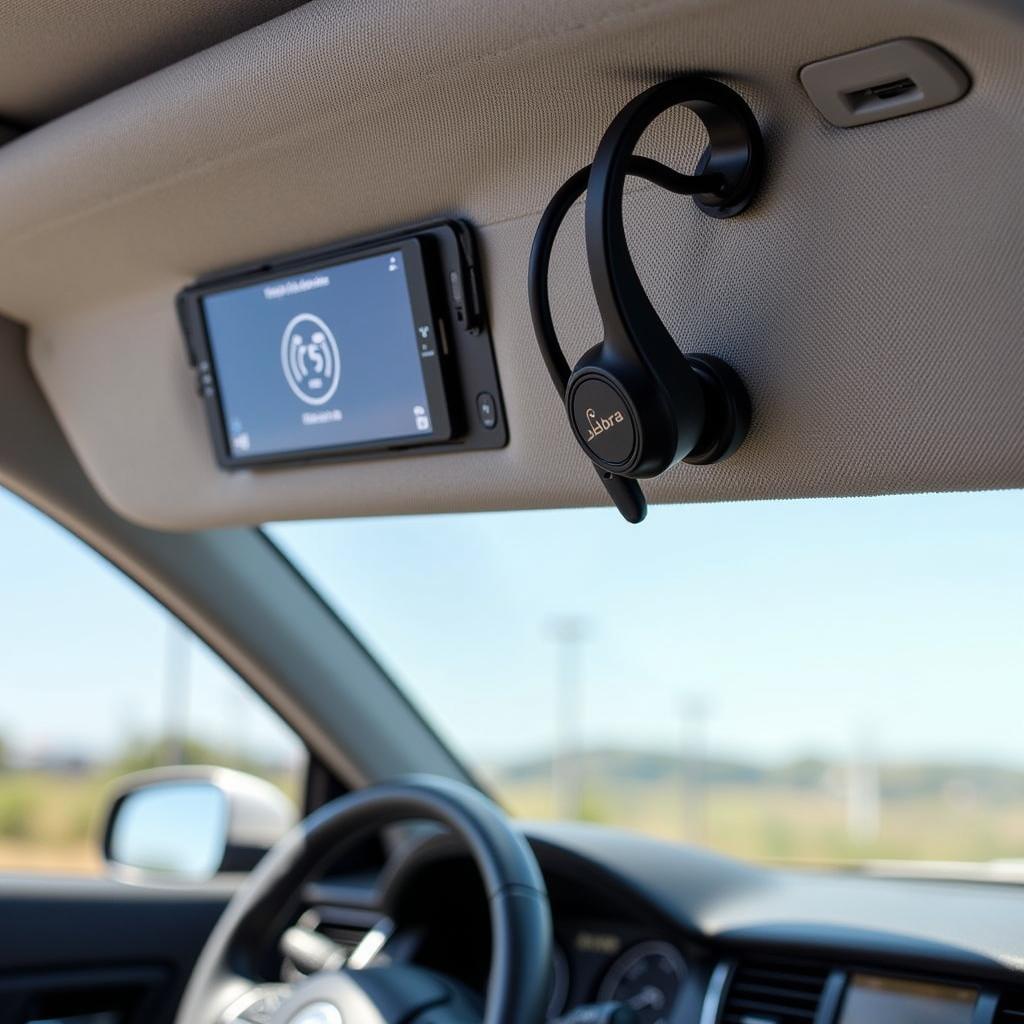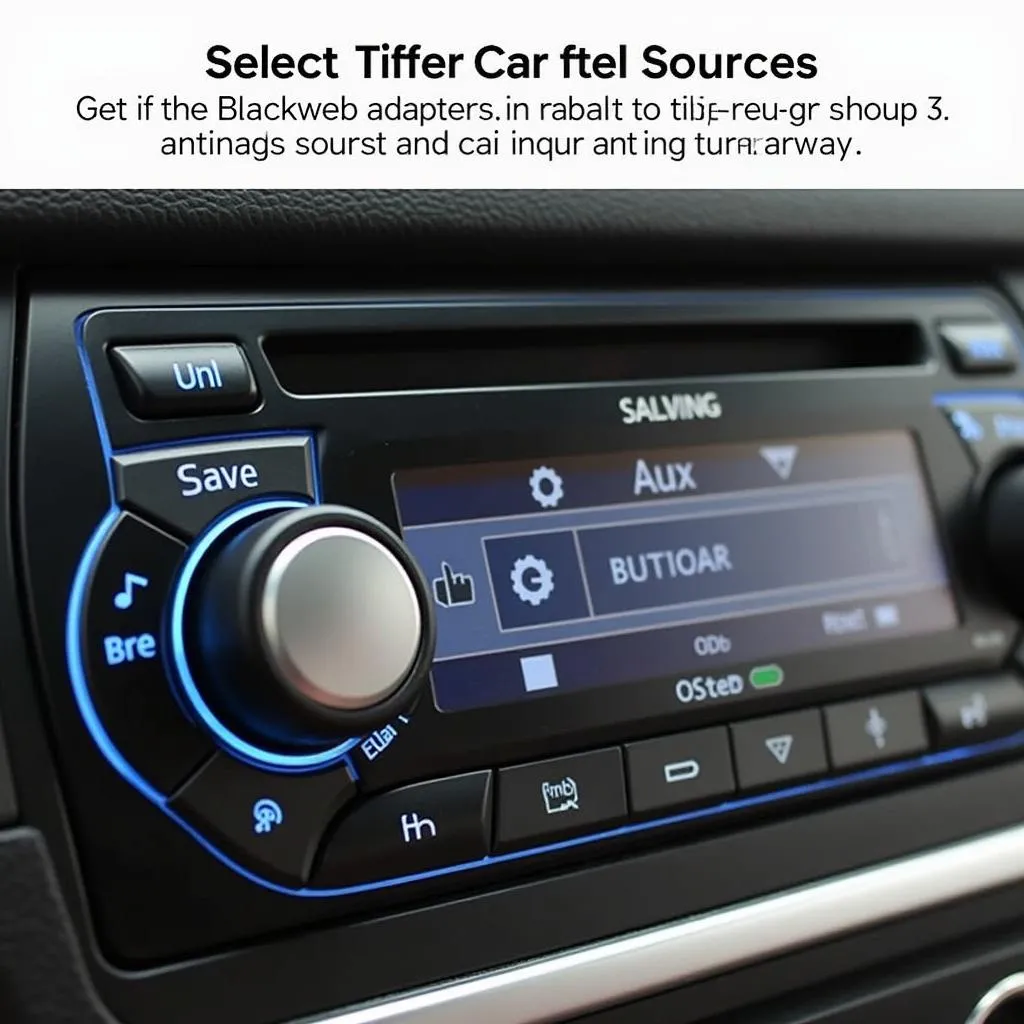The brake system warning light is one of the most important lights on your dashboard. When it illuminates, it signals a potential issue with your vehicle’s braking system that requires immediate attention. Ignoring this warning light could lead to brake failure, putting you and other drivers at risk. This comprehensive guide will delve into the common causes of a brake system warning light, how to diagnose the problem, and potential solutions.
Understanding Your Vehicle’s Brake System Warning Light
The brake system warning light, often depicted as a circle with an exclamation point (!) inside or the word “BRAKE,” can indicate several issues. It’s crucial to remember that this warning light doesn’t automatically mean your brakes have failed completely. However, it does mean that a component within the system requires inspection and possibly repair.
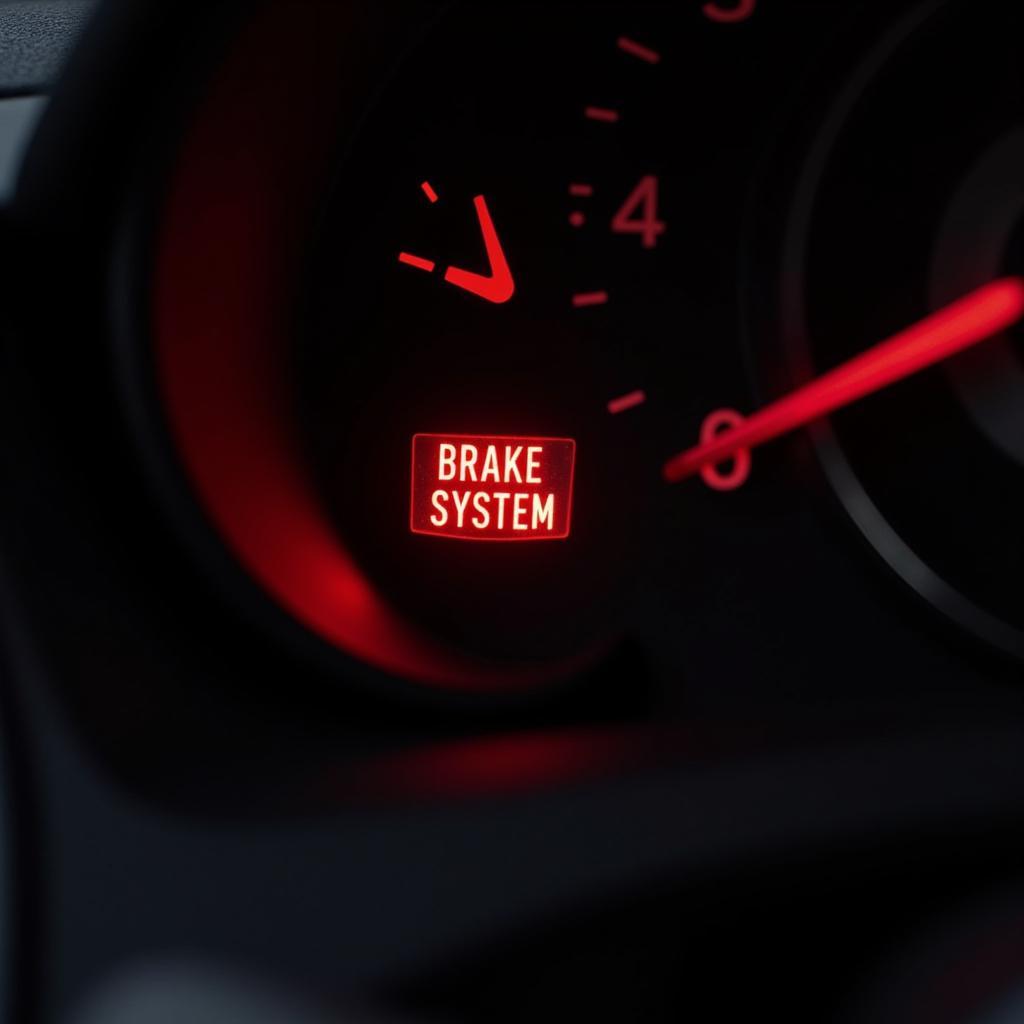 Brake Warning Light on Dashboard
Brake Warning Light on Dashboard
Common Causes of a Brake System Warning Light
Several factors can trigger the brake system warning light to illuminate. These include:
- Low Brake Fluid: This is the most common cause. Brake fluid is essential for transmitting the force you apply to the brake pedal to the wheels, allowing the vehicle to stop. A leak in the system can lead to low fluid levels, triggering the warning light.
- Worn Brake Pads: Brake pads have wear indicators that emit a high-pitched squealing sound when they become too thin. If ignored, this can lead to the warning light illuminating.
- Faulty Brake Caliper: The brake caliper houses the brake pads and pistons. A sticking or seized caliper can cause uneven braking and activate the warning light.
- ABS Issue: Modern vehicles often have Anti-lock Braking Systems (ABS). A malfunction within the ABS system, such as a faulty sensor, can trigger the warning light.
- Parking Brake Engaged: While seemingly obvious, sometimes the parking brake may not be fully disengaged, causing the light to stay on.
Diagnosing the Problem
If your brake system warning light comes on, it’s essential to investigate the issue promptly. Here’s a step-by-step approach:
- Check Your Parking Brake: Ensure the parking brake is fully disengaged. If the light remains on, proceed to the next step.
- Inspect Brake Fluid Level: Park your car on a level surface and locate the brake fluid reservoir. Check the fluid level, which is usually indicated by “Min” and “Max” markings. If the level is low, there may be a leak.
- Listen for Unusual Noises: Pay close attention to any unusual noises coming from the brakes while driving, such as grinding, squealing, or clicking. These sounds can indicate worn brake pads or other issues.
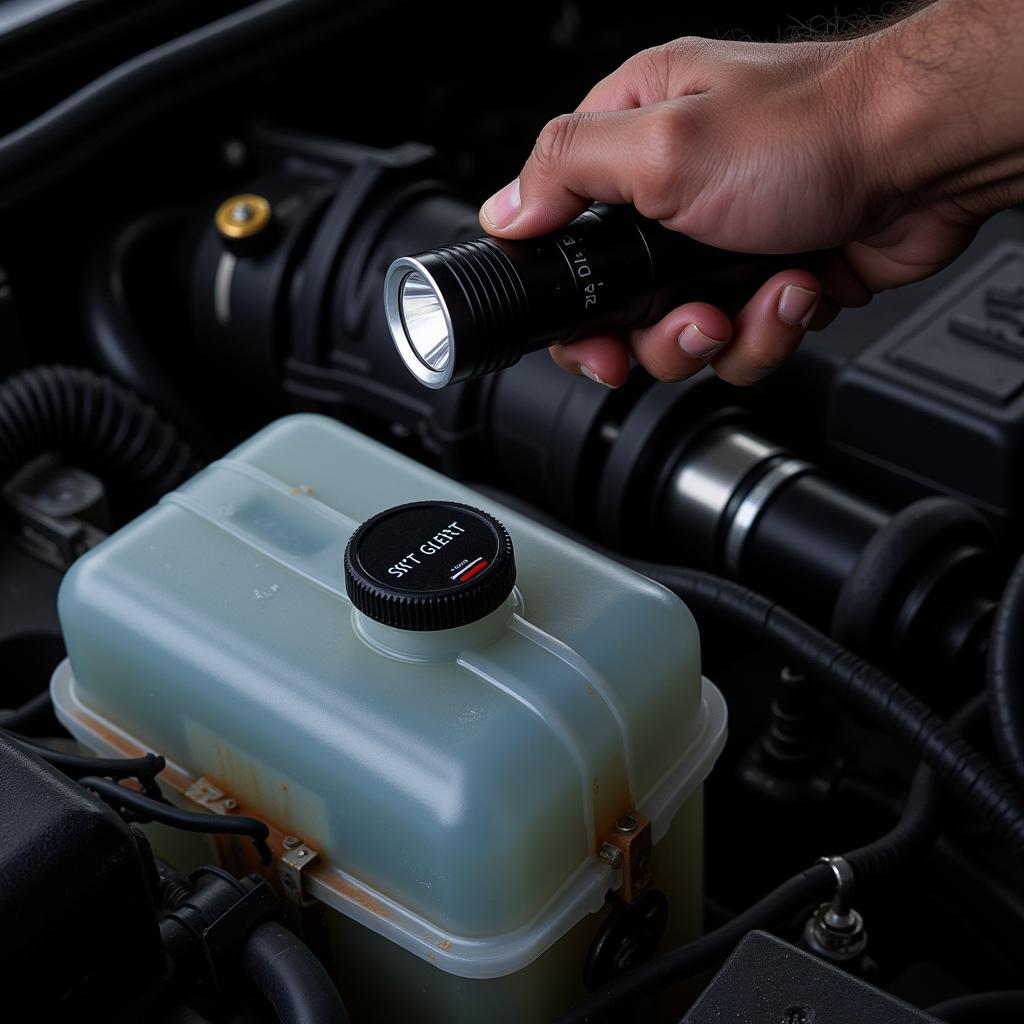 Mechanic Checking Brake Fluid Level
Mechanic Checking Brake Fluid Level
What to Do When Your Brake Warning Light Comes On
If you notice any of the following, stop driving immediately and contact a qualified mechanic:
- Soft or Spongy Brake Pedal: This can indicate air in the brake lines, a serious issue that requires immediate attention.
- Vehicle Pulling to One Side When Braking: This suggests a problem with one of the brakes, such as a stuck caliper, and can make the vehicle difficult to control.
- Burning Smell While Driving: A burning smell can indicate overheated brakes, which can lead to brake fade and reduced stopping power.
Remote Diagnostics and Software Solutions
In some cases, the brake system warning light may be triggered by a software glitch or a minor electronic issue within the braking system. Advances in automotive technology have led to the development of remote diagnostics and software solutions that can address these types of problems.
For instance, a qualified technician can remotely access your vehicle’s onboard computer system to diagnose the issue. This can be particularly helpful if the warning light is intermittent or if the cause is not immediately apparent. In certain situations, the technician may be able to resolve the problem remotely by updating software, clearing error codes, or making minor adjustments to the electronic control unit (ECU).
Preventative Maintenance for a Healthy Brake System
Preventing brake issues is always better than dealing with them after they arise. Regular maintenance can significantly prolong the lifespan of your brakes and keep you safe on the road.
Here are some preventative measures:
- Regular Brake Inspections: Have your brakes inspected by a qualified mechanic at least once a year or every 12,000 miles, whichever comes first.
- Timely Brake Pad Replacement: Replace your brake pads as soon as you hear them squealing or when they reach the minimum thickness specified by your vehicle manufacturer.
- Brake Fluid Flush: Brake fluid should be flushed and replaced every 2-3 years or as recommended by your vehicle’s owner’s manual.
Conclusion
A glowing brake system warning light should never be ignored. By understanding its implications, knowing how to diagnose common issues, and taking appropriate action, you can help ensure the safety and longevity of your vehicle’s braking system. Regular maintenance and timely repairs are key to preventing potential hazards and maintaining optimal braking performance. Remember, a well-maintained vehicle is a safe vehicle.
2001 ford escape brake warning light
bmw 745 brake lining warning light
hyundai veloster brake warning light
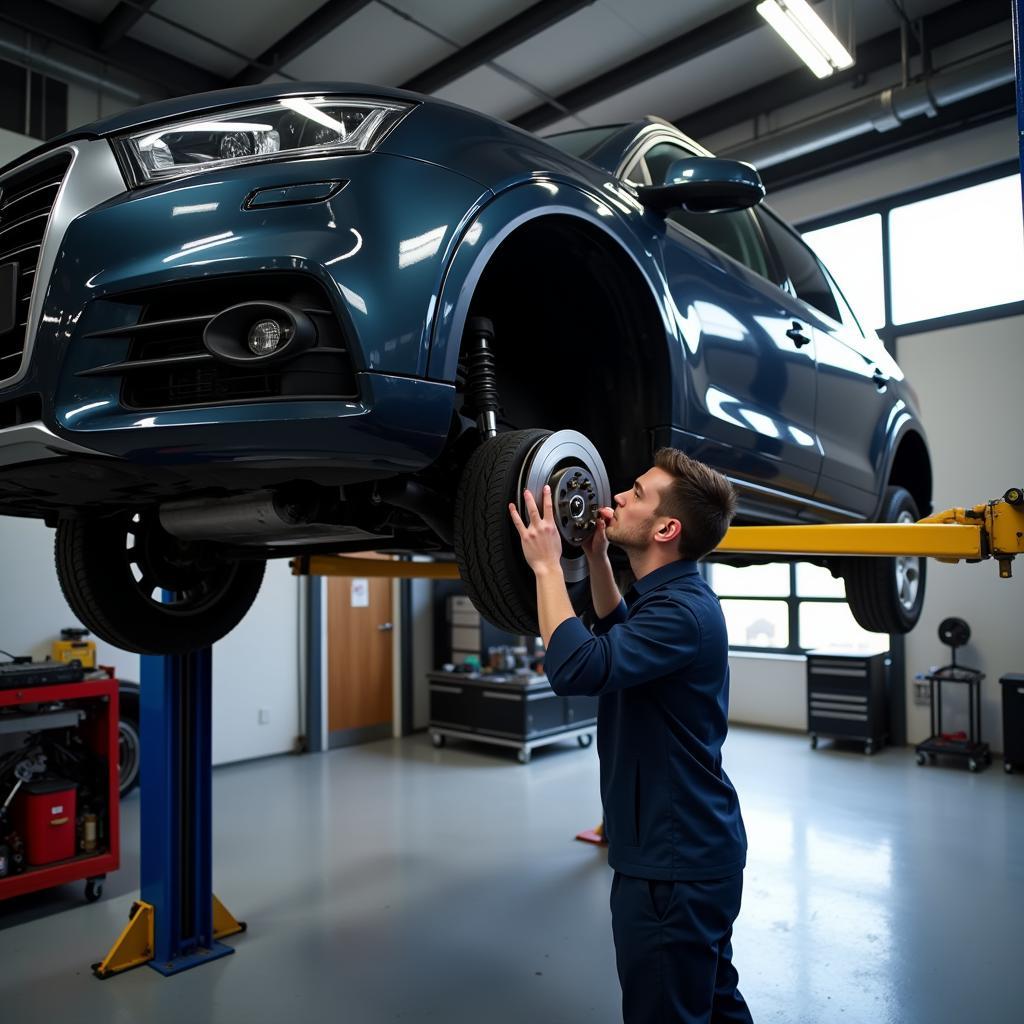 Mechanic Inspecting Car Brakes on Lift
Mechanic Inspecting Car Brakes on Lift
FAQs
1. Can I drive with the brake warning light on?
It’s strongly advised against driving with the brake warning light illuminated. It indicates a potential issue with your braking system that could lead to reduced braking performance or even brake failure.
2. How much does it cost to fix a brake system warning light issue?
The repair cost can vary significantly depending on the underlying cause. A simple brake fluid top-up might cost a few dollars, while a complete brake system overhaul could cost several hundred dollars.
2007 jetta brake warning light
3. How often should I check my brake fluid level?
It’s a good practice to check your brake fluid level at least once a month as part of your routine vehicle maintenance.
4. What is the difference between the brake system warning light and the ABS light?
The brake system warning light indicates a general issue with the braking system, while the ABS light specifically points to a problem with the Anti-lock Braking System.
5. Can I add any brake fluid to my car?
No, it’s crucial to use the type of brake fluid specified in your vehicle owner’s manual. Using the wrong type can damage your braking system.
volvo c30 low brake fluid warning
6. How long can I drive with worn brake pads?
Driving with worn brake pads is unsafe and can damage your rotors. It’s crucial to replace them as soon as they start making noise or reach the minimum thickness.
7. Can extreme temperatures affect my brakes?
Yes, extreme heat can cause brake fluid to boil, leading to brake fade. Extremely cold temperatures can also affect braking performance.

